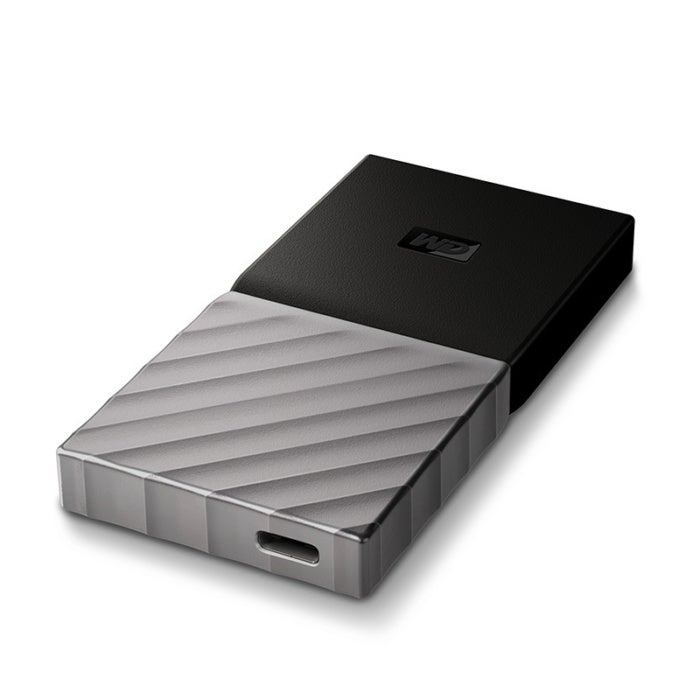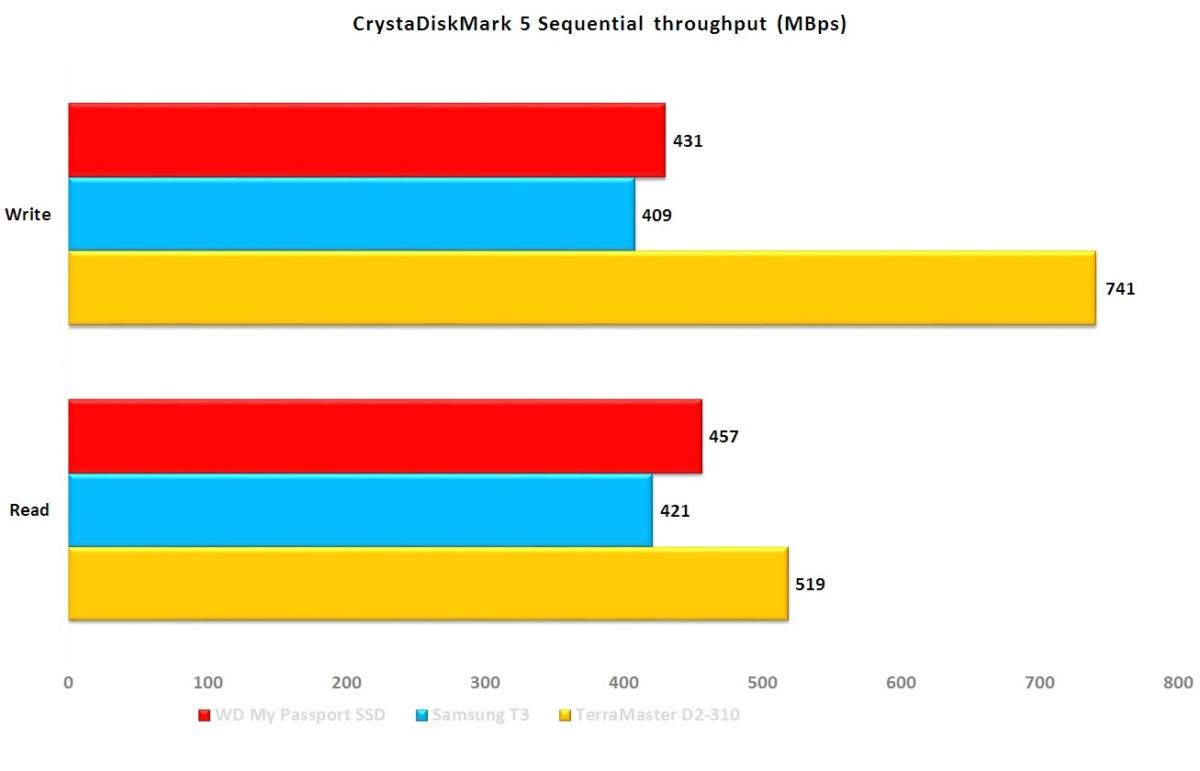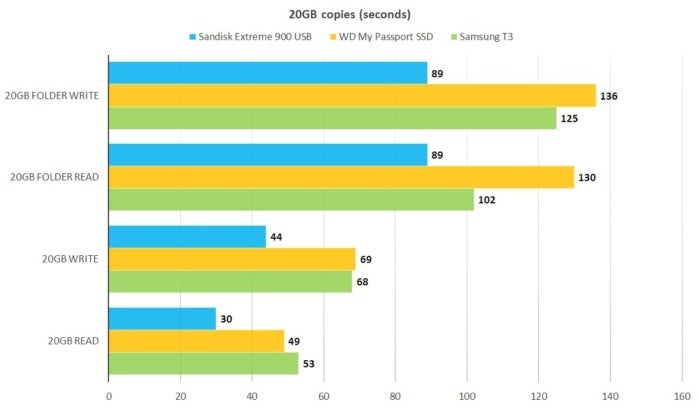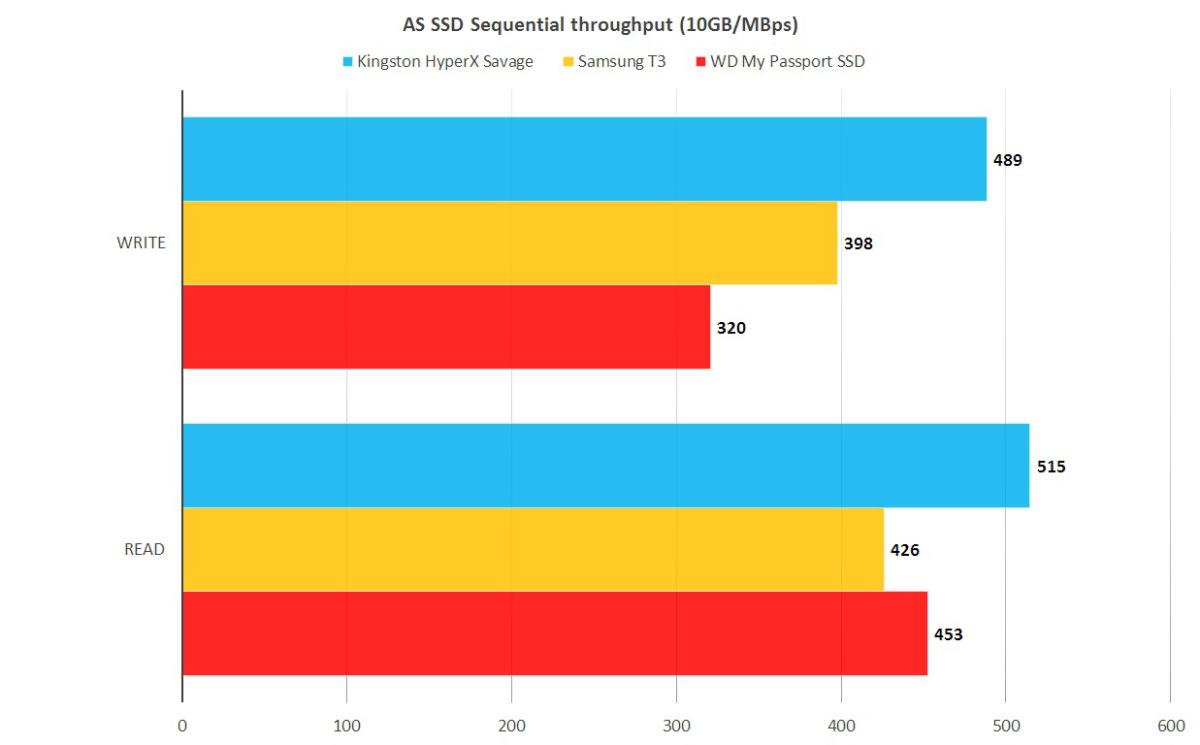WD’s My Passport SSD review: Worthy competition for Samsung’s T3 - turnerpeetruse2001
At a Glance
Expert's Military rating
Pros
- Army for the Liberation of Rwanda faster than standard USB hard drives and pollex drives
- Handsomely styled
- Very wad
Cons
- Slightly slower than Samsung's T3
- Lofty cost per gigabyte
Our Verdict
This external USB 3.1 10Gbps SSD is small, fast, good-looking and capacious. It's a great product, only it's slower with littler files and folders than its main competitor–Samsung's likewise expensive T3.
Until WD's My Passport SSD showed upwards on our doorstep, Samsung's T3 USB 3.1 (Gen 1, 5Gbps) takeout SSD was the chic in super-urbane, high-capacity storage. Now there's at least a conversation. The My Passport SSD even adds a little spice to the debate aside using a Type C USB 3.1 (10Gbps) user interface. The extra bandwidth made no difference in performance, and the T3 is still a emotional faster. To a greater extent on the why of that later.
Price and Design
Small and fast costs more. At the clip of this written material, the WD My Passport SSD was gettable only from Best Buy, with the 256GB version costing $100, the 512GB version priced at $200, and the 1TB version we tested going for an eventide $400. Darn, no prisonbreak on capacity. That's not cheap, but roughly connected equivalence with the T3.
The My Pass SSD is roughly 3.5 inches long-staple, 1.75 inches wide, and a mere 0.4 edge thin. We can't consider of anything offhand that's of a similar size, though an large lighter comes to mind. The important bit is that it fits hands down in the palm of your hand, and readily into all simply the smallest of pockets.
The driving force weighs exclusively a few ounces, and the two-tone, uncomplete-beveled design looks quite nice. A bit gaudier than the Samsung T3, but perhaps to a greater extent exciting. The drive uses a USB Type C port, but comes with a C-to-A adapter for use with older systems.
 WD
WD The beveled top gives the WD My Passport a nice facial expression, and better grip.
Note that patc WD, unlike Samsung, bundles whatever pretty fair backup package, we wear't recommend external SSDs for backup. That's because all of the high-capacity USB SSDs we've used testament occasionally, and apparently arbitrarily, make up one's mind they no longer contain data. Recreate the partition off and re-format, and they're in effect to go, but the data is gone. We've experienced this typewrite of failure with both the Samsung T1 and T3, besides as the Sandisk Extreme 900, with no discernible reason as to why.
Performance
The 1TB My Passport SSD is a bit faster than the Samsung T3 accordant to CrystalDiskMark, as shown below. All the same, both our 20GB copy tests and the AS SSD benchmark mildly disagree.
 IDG
IDG According to CrystalDiskMark, the My Passport SSD is faster than the Samsung T3, our other tests, including the hands-on, disaccord.
In our 20GB files and folder tests (see the chart below), the WD My Pass SSD lags importantly keister the Samsung T3, especially when reading. The Sandisk Immoderate 900 included in the comparison uses two M.2 SATA SSDs in Bust 0 to boost public presentation.
 IDG
IDG The Samsung T3 is still our quickest performer overall in the single-drive USB SSD category, but with medium-large files you'll never notice the difference of opinion with the WD My Passport SSD.
In the AS SSD test, the WD My Passport SSD reads a bit quicker, but writes considerably slower than the Samsung T3. The Kingston HyperX Ferocious is a top-notch internal SSD that we included in the graph to present the relative public presentation of SATA 6Gbps and USB 3.1.
 WD
WD AS SSD showed the WD My Recommendation SSD as faster reading, but considerably slower writing than the Samsung T3
If you're wondering how a USB 3.1 Gen 1 drive (the Samsung) can keep up with or surpass a Gen 2 drive, it's non the bus—it's the push. No SATA drive, such as those we believe to exist inside the WD My Passport SSD (WD wouldn't enunciat what was in the drive—this is supposition founded on performance) and Samsung T3, is going to transfer data at much over 500MBps, even attached at once to the SATA bus. Lend a bridge chip and USB's overhead, and 450MBps is pretty much the uninterrupted bound.
The only if way you can start to employ USB 3.1 Gen 2's rotund 10Gbps bandwidth is with to a higher degree one drive coupled in RAID, as with AFTech's Blackbird VS-2SSD, Sandisk's Extreme point 900, and TerraMaster's Darmstadtium-310; or aside using PCIe NVMe SSDs with a PCIe to USB bridge over microchip as does Akitio's Thunder 3 PCIe SSD.
 Gordon Mah Ung/IDG
Gordon Mah Ung/IDG Western Digital's My Passport SSD next to Samsung's T3. Under both is a standard hard driving-supported portable drive.
Pleasant job
WD has done a very nice job with the My Recommendation SSD. It's slightly faster than the T3 reading, highly portable, and handsome. But IT's slower than the T3 with small files, so all things being equal—and yes, we're talk price—the T3 is the ameliorate buy. Not that you'll be disappointed with either. Both are much faster than a Winchester drive, you'll swear off spinning platters forever. Ohio, look…except for backup. And capacity. And price per GB.
Source: https://www.pcworld.com/article/406981/wds-my-passport-ssd-review-worthy-competition-for-samsungs-t3.html
Posted by: turnerpeetruse2001.blogspot.com


0 Response to "WD’s My Passport SSD review: Worthy competition for Samsung’s T3 - turnerpeetruse2001"
Post a Comment